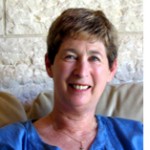By Dorothea Shefer-Vanson

MEVASSERET ZION, Israel — Life is full of strange coincidences. I first encountered the story of Charlotte Salomon about twenty years ago, when an exhibition of her work, a series of paintings with captions describing her life and entitled Life? Or Theatre? was held at the Royal Academy in London. It made a great impression on me at the time, with its unique way of recounting her autobiography through painting, music and text. Using all these media, this talented and sensitive young Jewish woman, who happened to grow up in Germany just as the Nazis were coming to power, illustrated her own history and that of all of Europe. In fact, I even went so far as to buy the very extensive catalogue of the exhibition, which still today holds pride of place in my book-case.
Very early one morning a few days ago, I happened to hear a program on the French radio recounting the story of Charlotte in music and describing her life as retold in a recently published book. Lo and behold! the very next day, while trying to buy a copy of Charlie Hebdo in a local newsagents-cum-bookshop, there on the shelf behind the salesperson was the book entitled Charlotte, a novel by French writer David Foenkinos. I bought the book, which had been awarded an important French literary prize, and began to read it almost immediately.
The first shock I got upon opening the book was to find that it was not written in the usual form but rather in short lines, in the form known as blank verse (‘verse libre’ in French). It neither rhymed nor scanned, but I persevered, and felt that somehow this form was indeed appropriate for describing Charlotte’s unique and tragic life.
Foenkinos gives his account of Charlotte’s story based almost entirely on what she herself had written and painted. Here and there he interrupts the poetic narrative to inform the reader (still in blank verse) about his own experiences when tracing Charlotte’s journey through life. He visited the part of Berlin where she grew up, the high school she attended there, as well as the south of France, where she spent her final years before being rounded up by the Nazis and dispatched to Auschwitz and the gas chambers. She was twenty-six years old and pregnant at the time.
Foenkinos admits that ever since encountering Charlotte’s story through her work he has been obsessed by her, and that writing about her in this form was his way of dealing with this obsession. I can understand him, and I think that he has done a good job. Charlotte Salomon’s life seems to epitomize all the horrors of life under the Nazis and all the dashed dreams and hopes of young people all over the world. The author even goes so far as to end the book by imagining her entering the gas chamber, describing the process in a brief but telling way on the basis of known accounts of how this was done.
The book is written in relatively simple, free-flowing French, and I found it almost impossible to put down even though I knew what happened to Charlotte at the end of her life. Charlotte’s story is just one among many millions of lives cut short, talents wasted and tragedies not averted. But by producing her oeuvre in a kind of creative frenzy during the last two years of her life, and then entrusting the suitcase containing the pages to a local doctor saying ‘This is my whole life,’ Charlotte Salomon has left us a precious legacy, and David Foenkinos has made her story accessible to many people who would otherwise never have heard of her. But only if they read French, I’m sorry to say.
*
Shefer-Vanson is an author and freelance writer based in the Jerusalem suburb of Mevasseret Zion. She may be contacted via dorothea.shefer@sdjewishworld.com. Comments intended for publication in the space below MUST be accompanied by the letter writer’s first and last name and by his/ her city and state of residence (city and country for those outside the United States.)